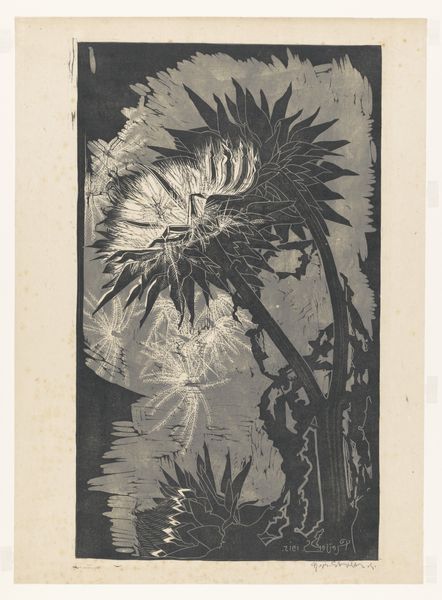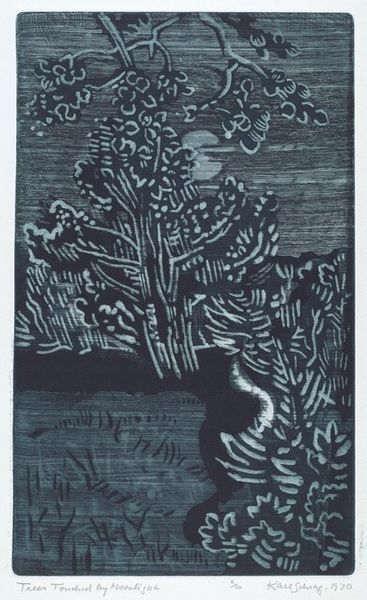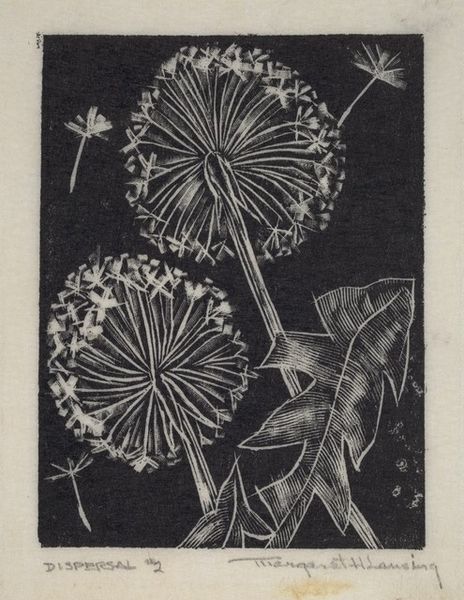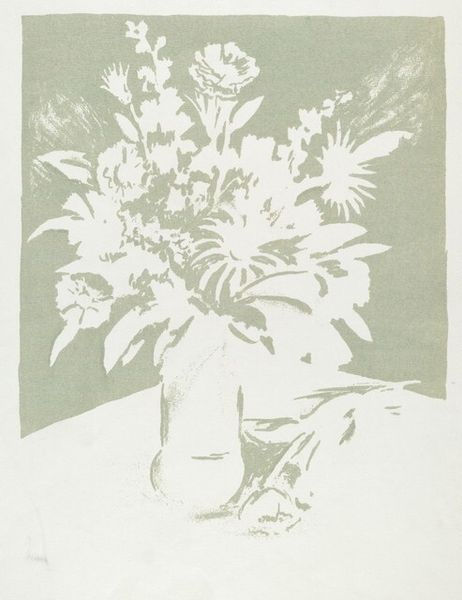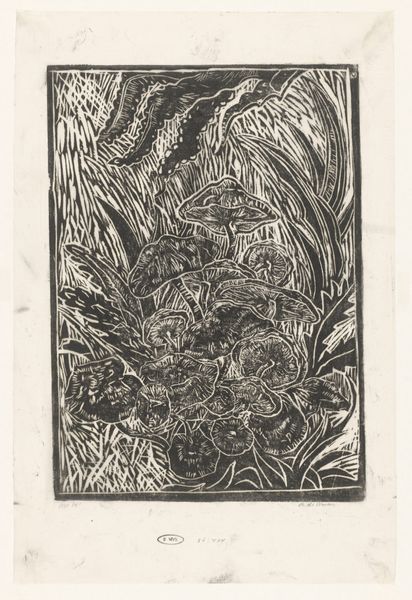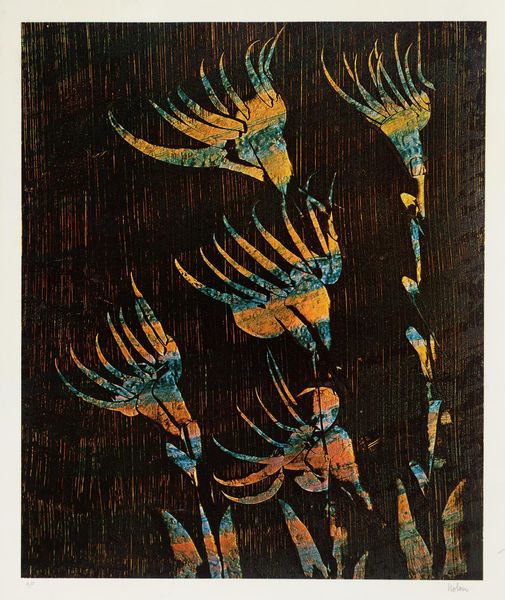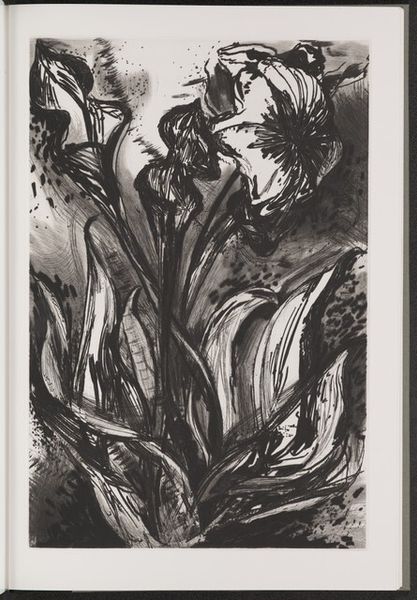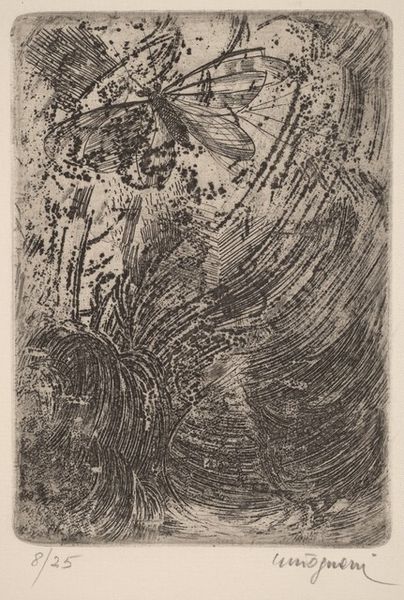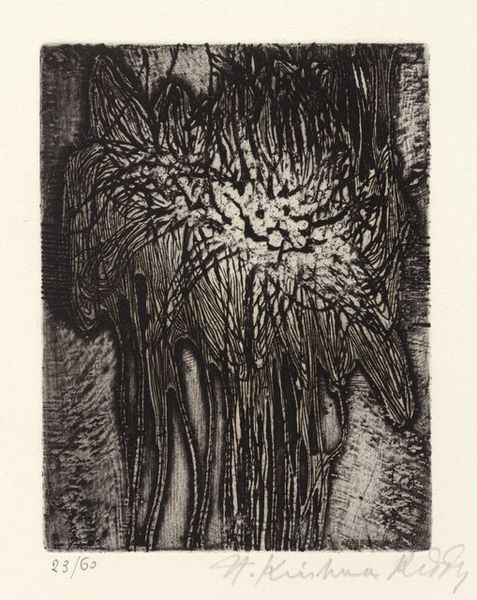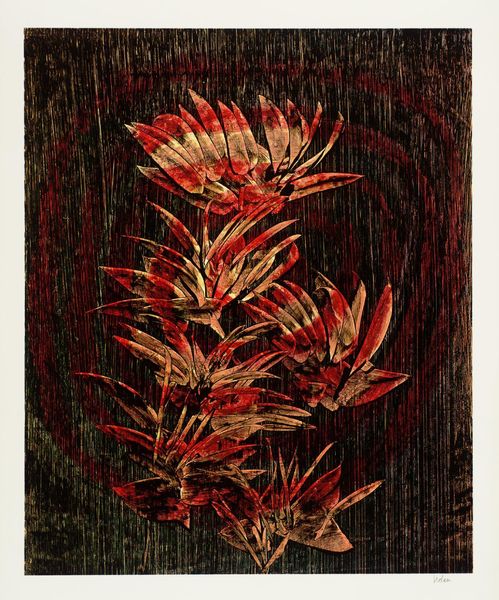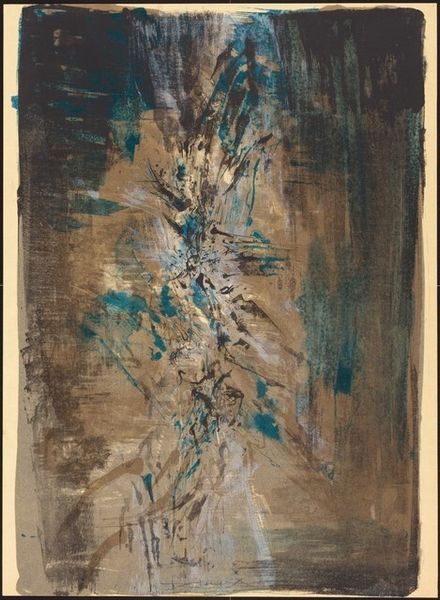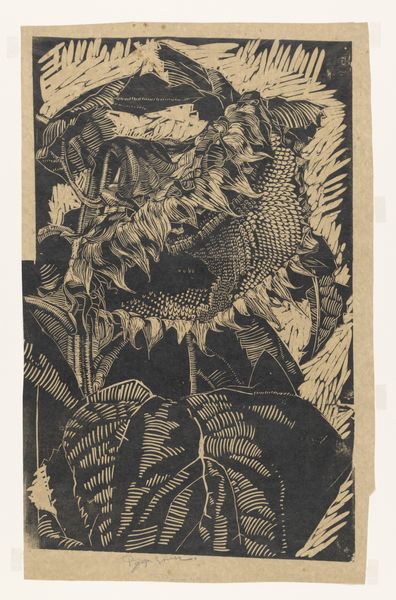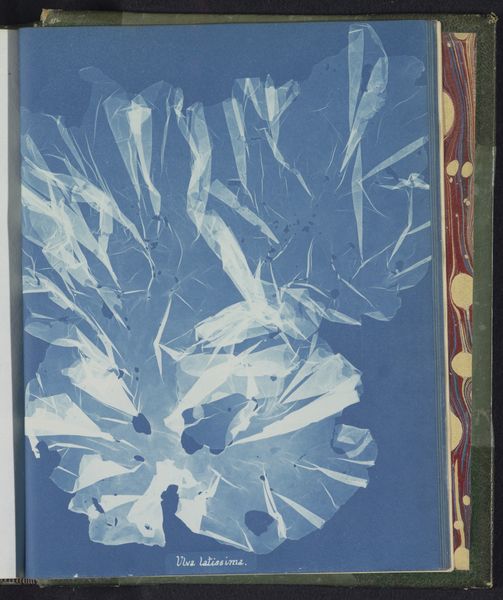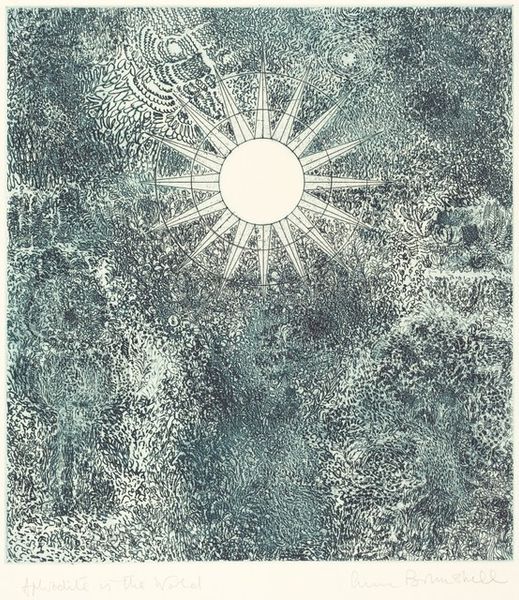
Copyright: Public Domain: Artvee
Curator: Reijer Stolk's "Artichoke," made around 1915, grabs my attention. It's rendered in linocut, which I always find intriguing. Editor: Initially, it strikes me as both delicate and imposing. There's a strange sense of serenity in its stark geometry; the monochrome blue almost hums. Curator: Linocut prints were rather avant-garde for landscapes during that period. What makes it fascinating to me is the clear relationship between the act of carving away material and how this evokes form, light and dark. See how the white space, likely created by removing lino, generates an almost explosive burst around the main artichoke bloom? Editor: Absolutely. You get a real sense of the hand in the making of this print. We are conscious that there is both pressure and release involved. And what that action provides here are some compelling contrasts. The hard, deliberate edges of the petals, almost weapon-like in form, sit against those bursts you describe; what seems uncontrolled and wild, like a burst of freedom, the residue perhaps, of the act. Curator: Exactly! It pulls against that post-Impressionist, almost Symbolist vibe. These simplified forms, that restrained color palette, they’re hinting at something more, I feel, a latent energy. Think about the physicality, too; it's an object made with tools—a direct interaction with matter, labor made visible, it challenges the established view of the sublime. Editor: Precisely! It's less about capturing a picturesque scene, and more about revealing the labor, the act of transforming raw material into image. But even with this, it conjures that familiar and enduring symbol – nature’s bounty, the fertile earth made physical, though in a very particular manner; through effort and purpose. Curator: And yet, there’s still that quietness, that whisper of a soul finding solace in observation, wouldn’t you say? It almost transports me into that moment in 1915 as if, maybe, for an instant, all wars would disappear. Editor: I can meet you halfway there. I agree on quietness but instead imagine a world shaped less by individual perspective and more by hands that mold the materials of our existence. Now that sounds to me a step closer towards world peace.
Comments
No comments
Be the first to comment and join the conversation on the ultimate creative platform.
